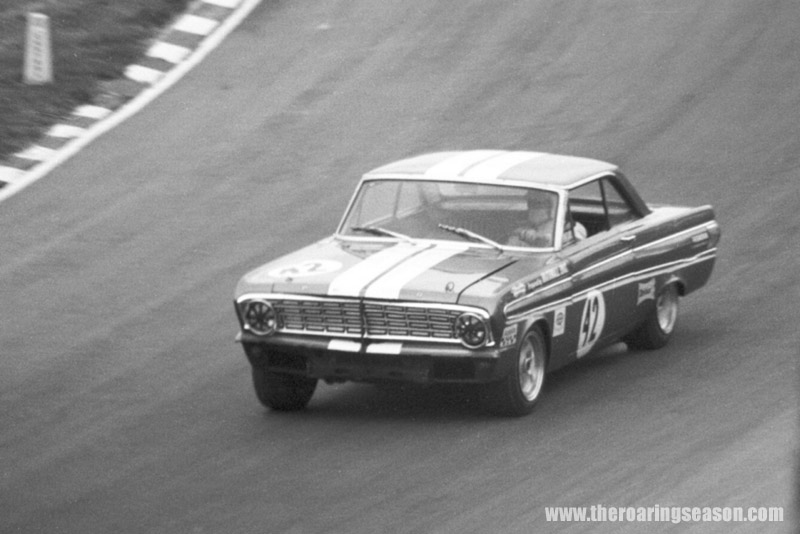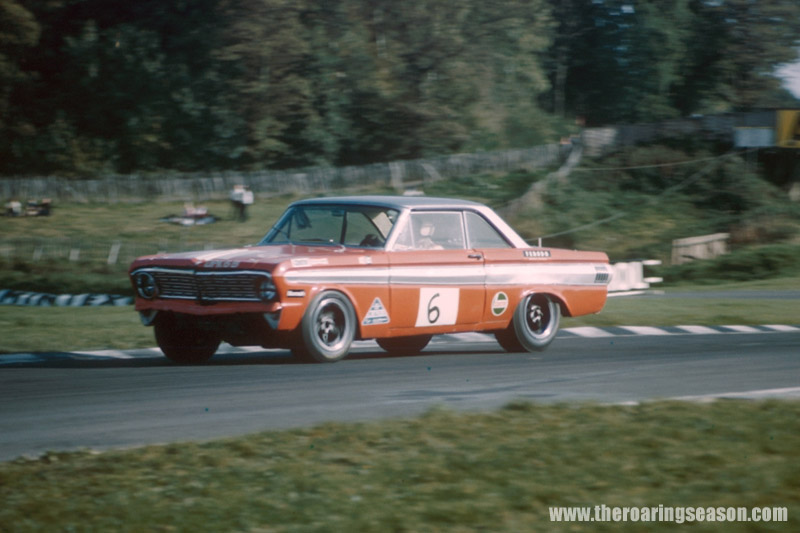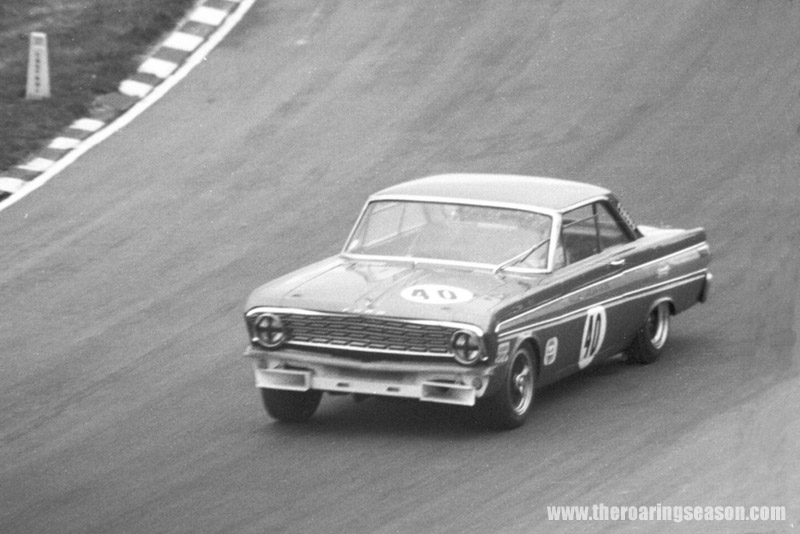-
Administrator


Group 2 rules were extremely limiting, allowing only very mild upgrades over that of the standard production vehicle. The final season for Group 2, 1965, was dominated by Roy Pierpoint’s Ford Mustang, whose only real challengers were the similar cars of Gawaine Baillie and Mike Salmon, although Jim Clark beat everyone at Goodwood in the Team Lotus Cortina. Pierpoint’s Mustang was one of the Alan Mann Racing Tour de France cars from 1965, converted for Group 2 touring car racing. Jack Brabham took victory in the final two races of the season, in another Mustang, but by then Pierpoint had done enough to take the title.
Group 5, introduced for 1966, allowed many more modifications to be made than that of Group 2. Wider wheels could be fitted, made of any material available. Induction systems were free, which meant teams could use multiple carburettors, or, if the resources were available to them, fuel-injection. But perhaps the biggest single rule that would determine the outlook of the BSCC over the next four seasons, was that of the minimum racing weight. In factory standard form as produced by Ford, the Falcon comes out a little heftier than the Mustang, and has a larger frontal area, so under Group 2 rules teams generally favoured the Mustang. Indeed, no Falcons competed in the 1964 or 1965 BSCC, or, it would seem, in any other touring car championship in Europe. Even the massive Galaxie looked a better option, with its horsepower advantage from its big block motor.
1966 BSCC
However, FIA Group 5 rules suddenly swung the advantage back in the Falcons court, because of the incredible 960kg minimum racing weight offered the Falcons for the 1964 Monte Carlo, which would also carry over to Group 5 touring car racing. For the teams who really did their homework, the Falcon provided an extremely competitive package, being powered by the same V8 motor as the Mustang, but weighing significantly less. But most teams didn’t dig deep enough to spot the Falcons potential. At least, not to begin with. Indeed, come the opening round of the 1966 British Saloon Car Championship at Snetterton, only two Falcons lined up on the grid, those of reigning champion Pierpoint, and Gawaine Baillie.

The Falcon Sprints that appeared in the BSCC were those mothballed following their rally adventures two years earlier, and teams further skimmed weight off by removing bumpers and fitting wide lightweight magnesium or alloy wheels.
Jack Brabham took victory in the opening BSCC race in the same Alan Brown run Mustang he’d won the final two rounds with the previous season, now upgraded to Group 5 spec and fitted with fuel-injection. He overcame pole man Clark in the rapid Lotus Cortina, as did Muir in the mighty Galaxie. Baillie was fourth in the Falcon, Pierpoint retired. However, both Falcons started off the rear, after problems in qualifying, and Baillie managed to equal Brabham’s best lap time, itself a new lap record. So the Falcons gave some indication of their potential.
Moving to Goodwood for Round 2, and Brabham was on pole with the Mustang, while Baillie was again the best of the Falcons, in fifth. Pierpoint had more troubles, lining up a lowly 22nd, and retired from the race early on following a shunt. Baillie dropped well down the order in the race.

Round 3 was at Silverstone, and while Pierpoint was absent with his own troubled Falcon, Alan Mann Racing had entered a Falcon for John Whitmore to drive, this being the car driven by Peter Jopp in the ’64 Monte, now converted by Alan Mann Racing for Group 5 touring car competition. Whitmore put the beautiful red and gold machine on pole, and while Muir briefly powered the big Galaxie ahead on the opening tour, Whitmore soon rounded him up, took over the front, and proceeded to romp away as he pleased. In doing so he set a new lap record, and won by 16 seconds, from the similar Baillie Falcon, which overcame an early battle with Muir, Mike Salmon’s Mustang, and the Team Lotus Cortinas of Jacky Ickx and Peter Arundell. Baillie’s cause was helped by the retirement of both Muir and Salmon.
Silverstone was to be the only BSCC event entered by Alan Mann Racing in 1966, but for the next round, at Crystal Palace, Pierpoint returned, having ditched his Falcons fuel-injection system in favour of carburettors, and he charged off to lead the race from second on the grid, to head pole man Arundell, and held his position throughout, eventually finishing 6 seconds ahead of Brabham’s Mustang, and Ickx’s Lotus Cortina.
 Posting Permissions
Posting Permissions
- You may not post new threads
- You may not post replies
- You may not post attachments
- You may not edit your posts
-
Forum Rules






 Reply With Quote
Reply With Quote